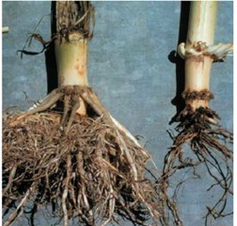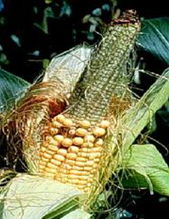And during the (climate) apocalypse descended a plague of….. beetles?
- Small Steps Big Change
- Mar 28, 2022
- 4 min read
Updated: Jun 24, 2022
Locusts usually get the negative attention when imagining apocalyptic plague scenarios, and although there has been devastating locust plagues in recent years due to the changing climate, there is a smaller, more insidious threat which might just replace the locust in time to come.
There is no denying that climate change is here....
And has been warming the earth for years – studies suggests it started as far back as the 1830s. This has resulted in and will continue to result in a myriad of impacts: rising sea levels, droughts, floods, and fires – the list goes on. However, one deeply concerning repercussion of climate change is our food security and abundance. Crop losses from pests, disease and fungi are currently between 10-16%. Worryingly, it has been estimated that for every degree of warming the loss of staple crops will increase by a further 10-25%,
This is sobering when considering that collectively these staple crops (wheat, rice, potatoes and maize) account for a staggering 50% of human diets and individually wheat and maize account for 20% and 61% respectively for animal feed.
The figure below shows a reduction in crop
yields from rising temperatures alone.

The estimated increase is not simply fluctuations like droughts and floods; it is due to pests, specifically the increase in pest populations due to the warmer temperatures. Insects bodies rely on the surrounding temperature, therefore it is thought that rises in temperature with decreasing soil moisture are a great combination for many insect populations to thrive.
One hardy insect family causing immense damage to crops (there are many) across the globe is the innocent looking beetle. ‘But beetles are great’ you cry! Indeed, some are, some however are extremely voracious and love nothing more than to decimate crops on which our world relies.
Imagine a world without the delicious and versatile potato!
If climate change keeps providing the perfect breeding ground for the Colorado potato beetle to thrive, then that world might become a reality.
The Colorado potato beetle is a particularly damaging pest as both the larvae and the adults feed on the plants.
A single larvae can consume 40cm of a potato plant leaves, then as an adult, feeds on the stems and tubers. This is a problem as any loss of foliage over 75% may lead to complete crop failure.
More than 40 countries have been invaded by the Colorado potato beetle, including Europe and Asia; the world’s two biggest potato producers, and can reduce yields by anywhere between 20-100%.
Colorado potato beetles need warm temperatures to reproduce, and depending on their environment produce between 1-3 generations per year. Warming temperatures may lead to more generations per year, but it also means that as the ground may stay warmer, more beetles will survive the winter, and thus more beetles each year. This also means as the climate warms, its distribution will increase as countries previously too cold may be at an optimal temperature for survival. Thus more beetles, less potatoes.
It isn’t just potatoes that are being decimated by ravenous beetles, maize is also under attack. The Western corn rootworm (yes, despite the name, it IS a beetle!) and its cousin the Northern corn rootworm, both cause secret, major damage estimated at over $1 billion a year in the U.S alone. These rootworms are at their most dangerous as larvae as they live amongst the roots as they consume them, making it hard to detect, as the stalks remain upright for quite some time. The whole corn rootworm family like it warm, and just like the Colorado potato beetle, they will further their distribution and numbers with rising temperatures.

Meet the rootworm family!
And see the damage
they do to roots and maize.
Is there a solution?
These beetles are especially hardy and easily adapt to new environments, making controlling populations difficult. Many countries previously have (and continue to) turn to chemical treatment, which has an adverse effect on the good guys. Although studies into biological control are ongoing. Nature is helping with predators, but again climate change is hampering efforts. A major predator of the Colorado Potato beetle is the magnificent lady beetle – whose declining populations have been attributed to climate change. The population of natural predators of the rootworm family are likewise at risk.
Research into biological control of the Colorado potato beetle is ongoing, the photo to the right below shows a beetle being attacked with the insect killing fungus Beauveria bassiana.

So what now?
Invasive critters and climate change can’t be stopped overnight, action must happen. Further research into and application of biological control of pests must continue, but those efforts will be futile if we continue to warm our planet.
Governments the world over must introduce sensible and fair legislative changes to achieve zero emissions as soon as possible. Individuals also must take responsibility and there are many things we can do to help. Reducing/ceasing consumption of meat and fossil fuels as well as switching to renewable energy are three effective actions people can take now.
So, what action will you take today?











Comments